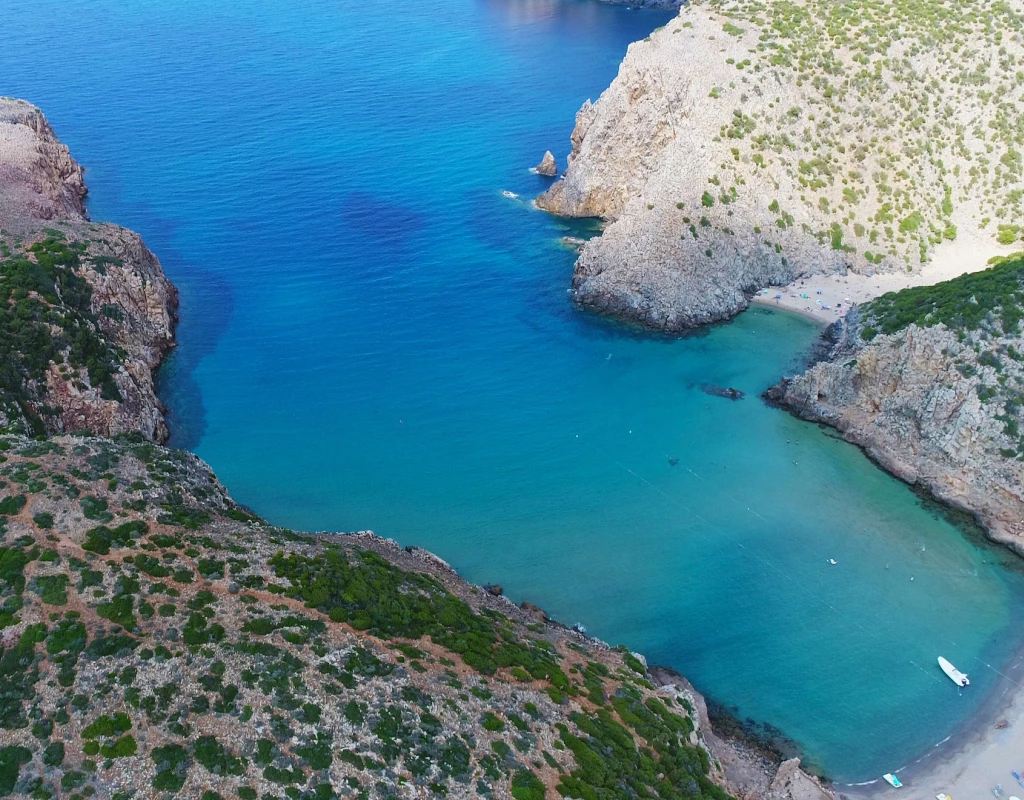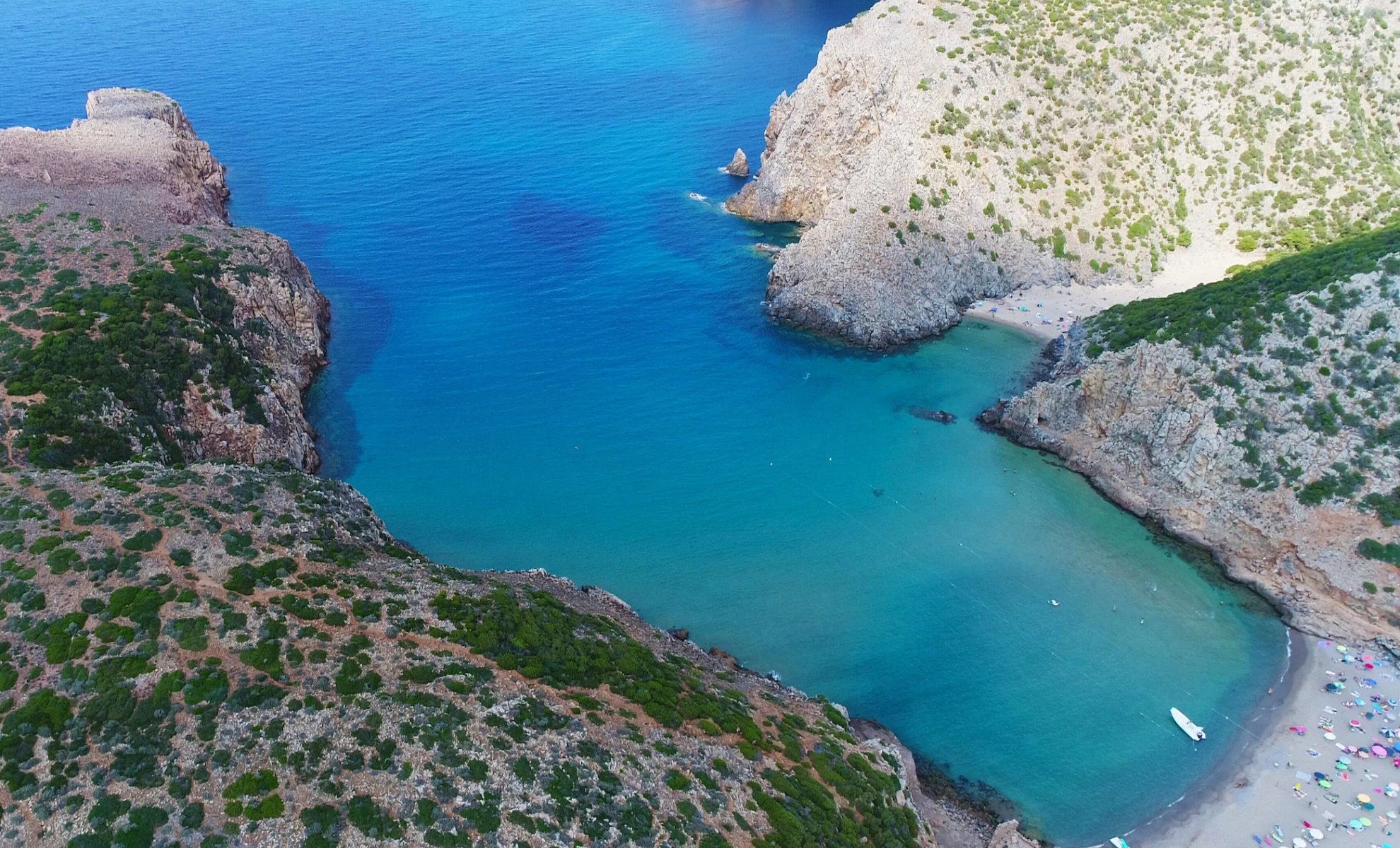The coastal road to Buggerru winds its way through forests of holm oaks, Mediterranean vegetation and abandoned open-air mines. First overhanging the sea, then between steep climbs and fills, walking along it, you get ready to admire one of the most beautiful natural spectacles in Sardinia: the beach of Cala Domestica, a jewel of the south-westerner coast.
Ph. Chiara Murenu - Trentaremi
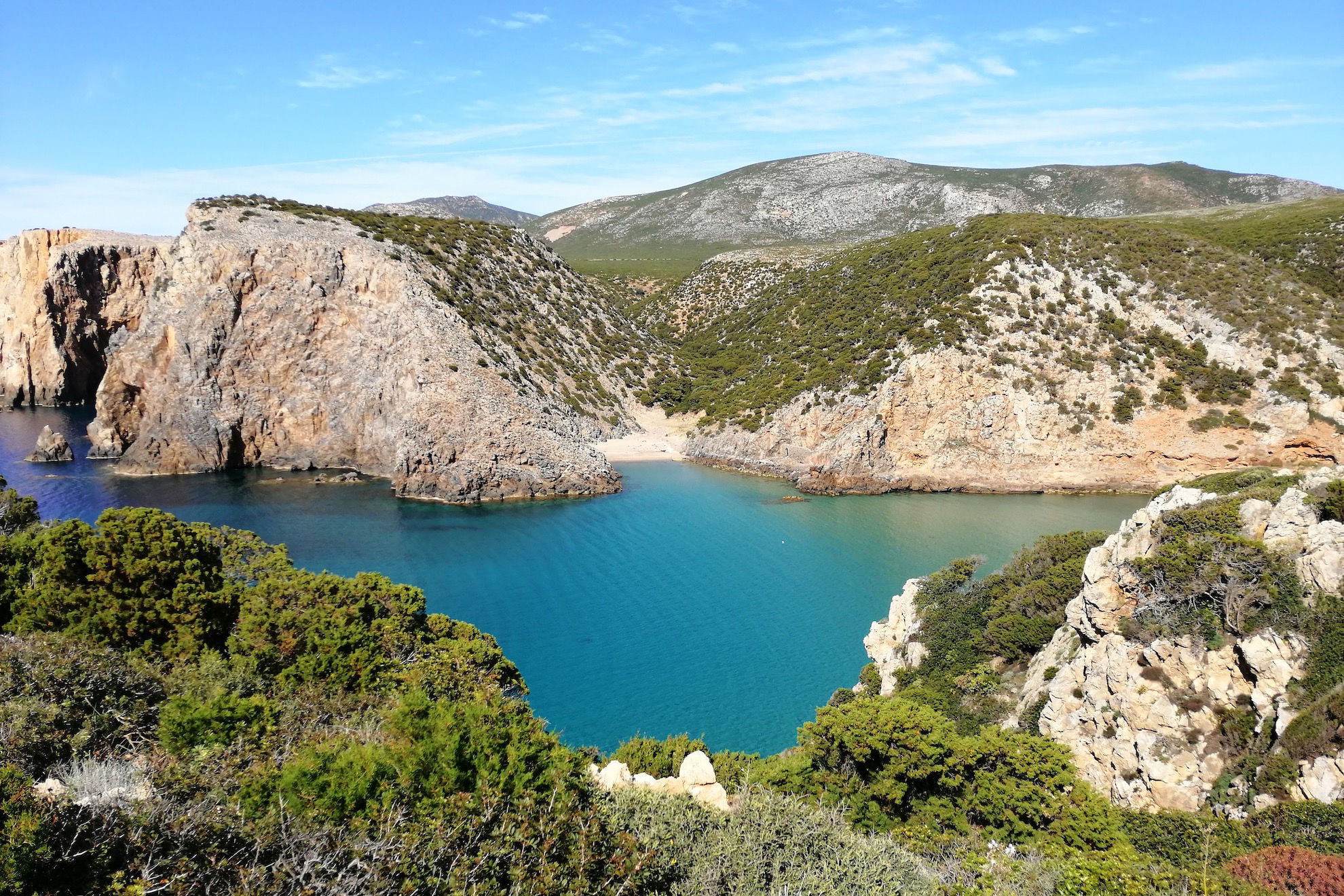
With a beach of the same name, Cala Domestica is also a destination for well known treks such as “Mines in the blue”, the “Way of Santa Barbara” or the “Way of a hundred towers”. Between June and September, the place is quite crowded. Many boats are moored outside the cove which is an authentic natural swimming pool, offering to viewers seabeds colored with shades from intense emerald green to bright blue. In the rest of the year, however, you can find yourself alone to admire this place as one high expressions of nature's art.
Ph. Chiara Murenu - Trentaremi
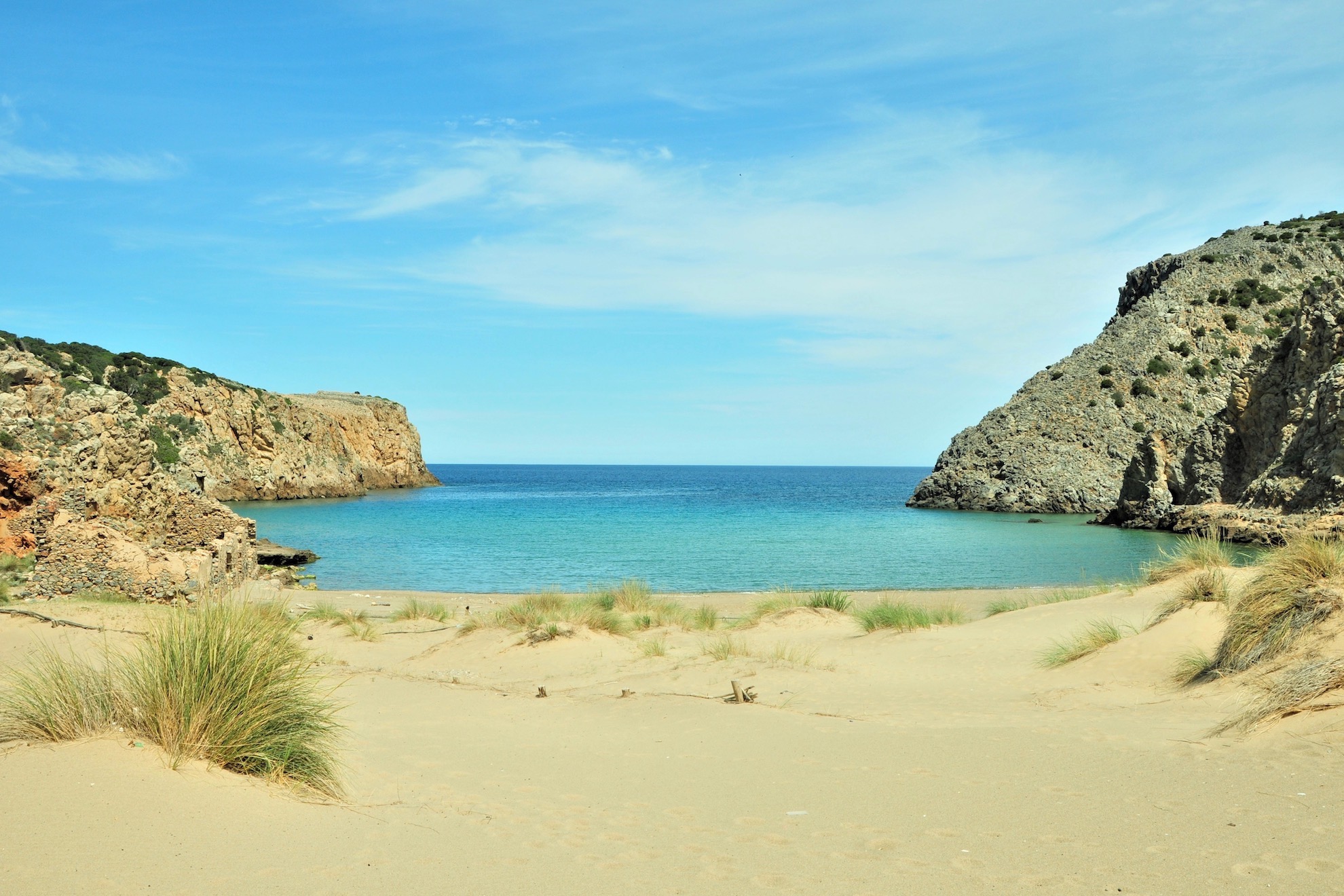
A wooden walkway is surrounded by white dunes and green tufts of Mediterranean vegetation that gently sway in the breeze. It allows you to comfortably reach the sandy beach, whose colors blend from the intense yellow of the sandstone to white.
On the right of the beach, a path created in the rock by miners who wanted to get to Buggerru quickly, leads to a smaller fjord and beach, passing through an arch from which you have a very suggestive glimpse.
Ph. Chiara Murenu - Trentaremi
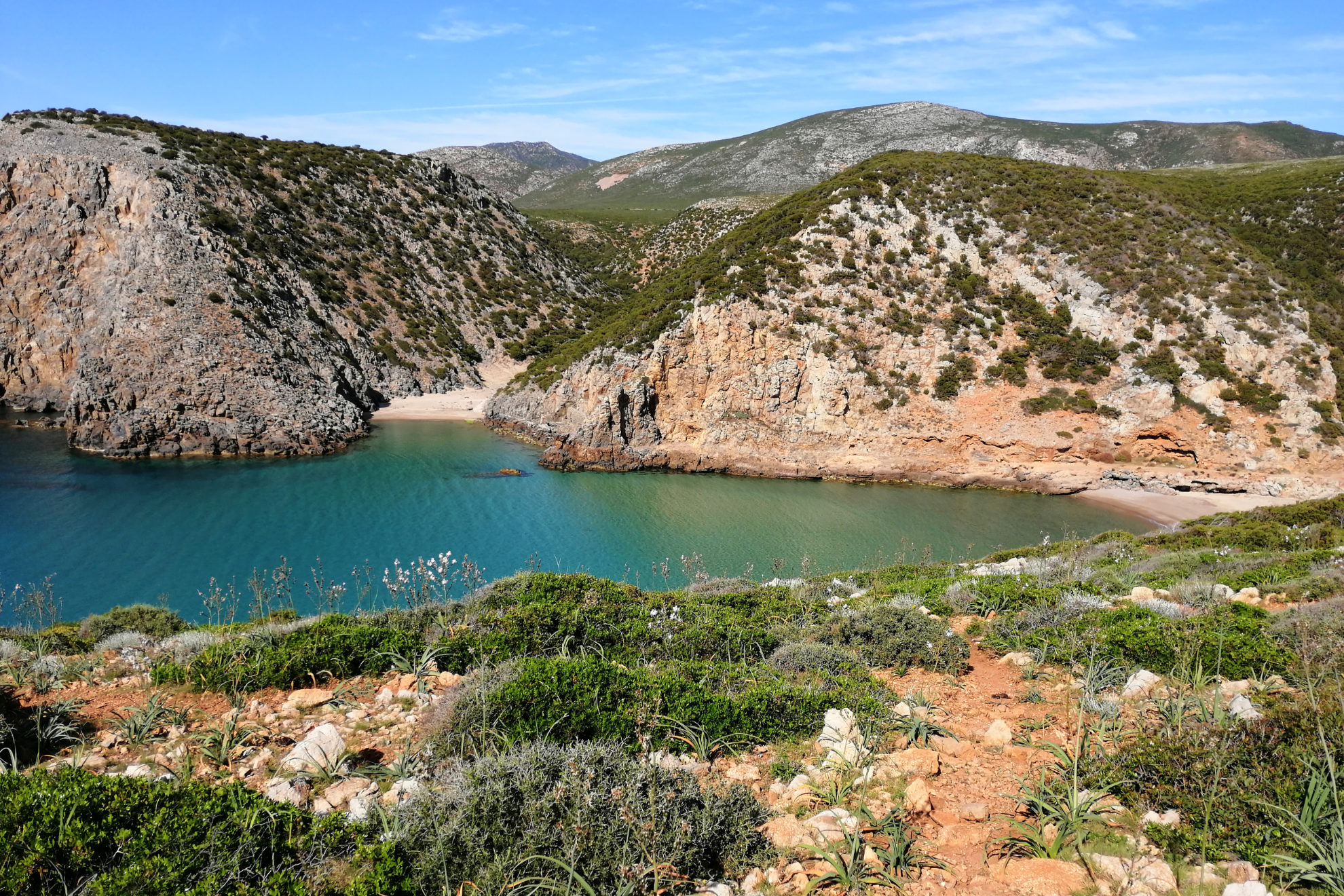
Wherever we look, we find signs of human interaction: in the plateau on the left of the beach is the “Spanish Tower”, a fort 12 meters high with a diameter of 11. Its design dates back to 1577, but it was completed only in 1785. The tower was disarmed in the nineteenth century and renovated after the Second World War, when it was used as a protection by the soldiers of the Royal Navy, before being completely abandoned to the sea and the wind with the end of the war.
The signs of dynamite on the rock and the ruins a few steps from the sea testify how war and greedy and wild mining did not save so much beauty.
The Spanish Tower | Ph. Chiara Murenu - Trentaremi
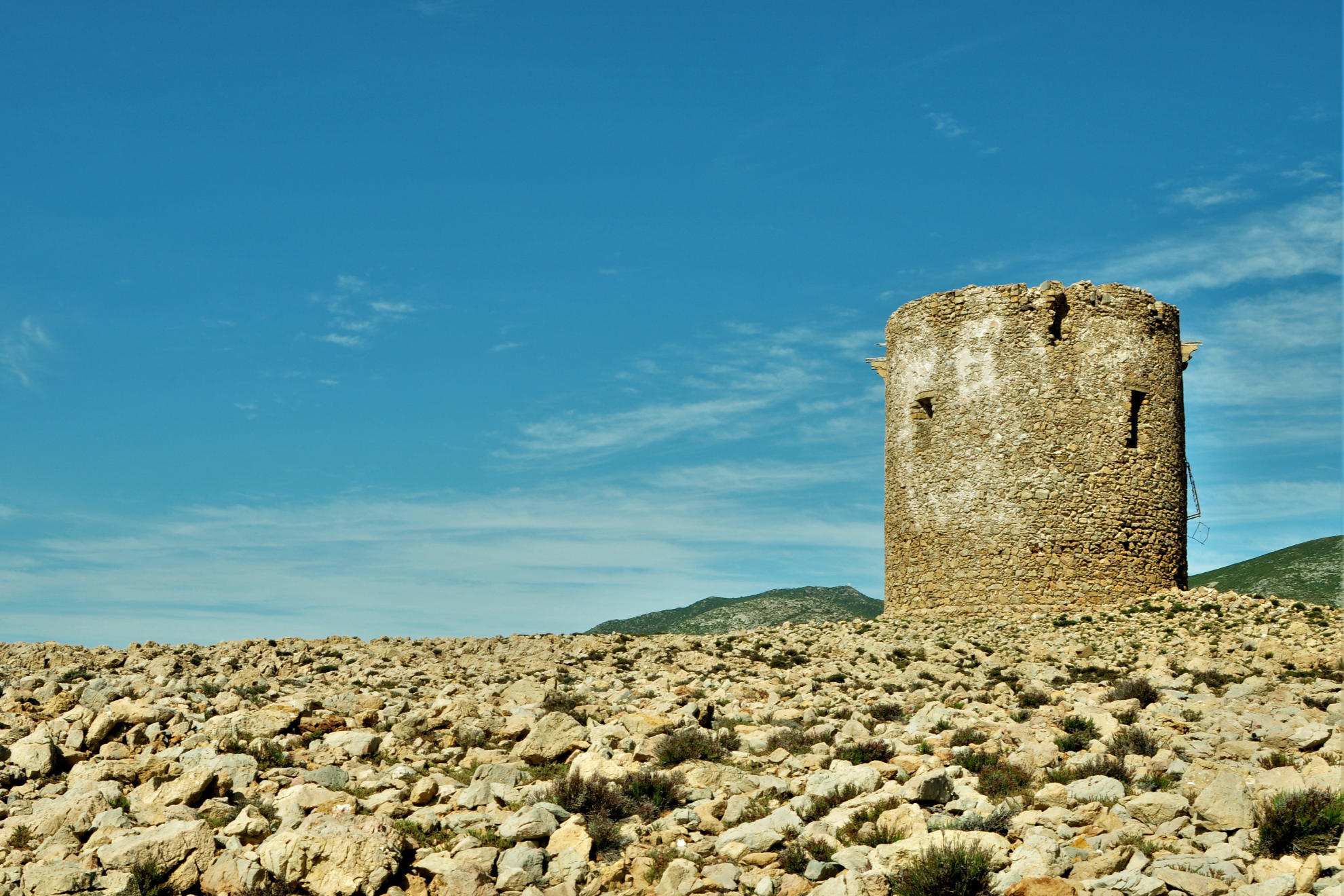
Perhaps the most fascinating view, which embraces the segment of coast between Capo Pecora and the island of San Pietro, is a few minutes' walk along a path of Mediterranean vegetation that climbs along the promontory between the overhanging rocks, up to the tower.
From here the beach, the sea and the coast become the background of a nature colored with flowers ranging from the magenta of the pink cistus to the yellow of the helichrysum up to the elegant white of the asphodels.
Around the tower, on the opposite side of the cove, the landscape changes completely: between clear limestone, the vegetation thins out until it disappears and the view becomes lunar.
Ph. Chiara Murenu - Trentaremi
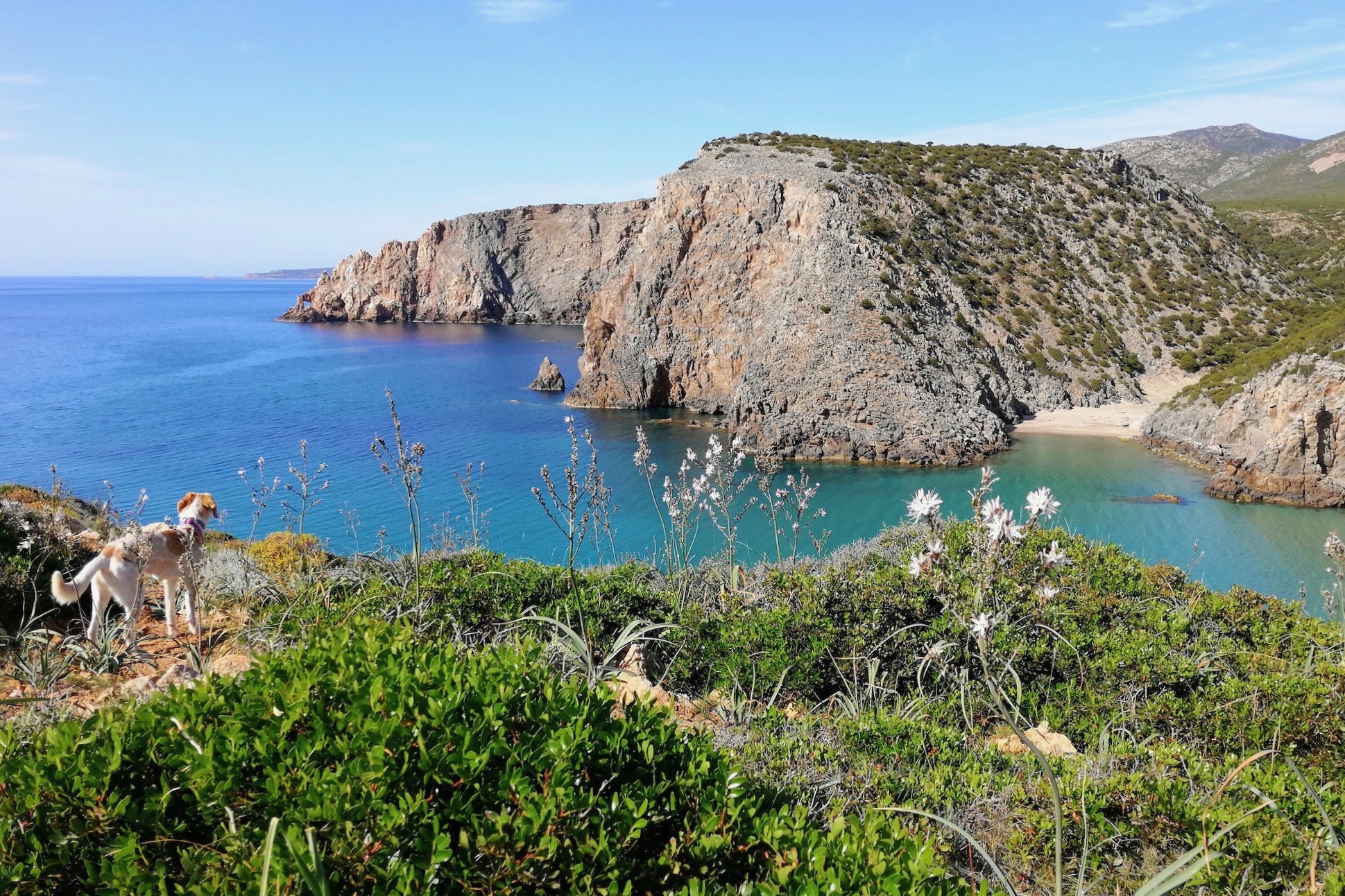
Here nature has been very generous: the beauty of the landscape, the colors of the flowers, the sea, the rock, the intense scent of the Mediterranean vegetation carried by the breeze, the symmetry and the elegance of the shapes. A mixture that sometimes makes you think you are in paradise, for the feeling of inner peace that grows until you become part of the place and that lasts even when you say goodbye to the bay and take the way back.
